It seems everyone these days is a curator.
We curate books, our news feeds, closets, and travel experiences. We curate cocktail recipes and our children’s refrigerator art. We curate daily life decisions. The term has become so ubiquitous that it has nearly lost its meaning.
In museums, however, curators perform very specific roles. They are specialists, usually with advanced degrees, who devote their expertise to caring for collections—from photography to dinosaur bones, birds, and beetles. Traditionally, they have been the guardians of museum collections. They are the authorities responsible for how to care for, display, and interpret objects for museum audiences as well as curators and scientists from museums and universities around the world.
But the role of museum curators has changed significantly over the past few decades, tracking the evolution of museums themselves. Once primarily viewed as repositories of cultural artifacts and biological specimens, institutions like Carnegie Museums have become invaluable educational resources for schools, teachers, and the general public, and their curators seek to converse with members of their surrounding communities rather than have a one-way relationship.
Amid an intensely polarized cultural and political climate, museums are one of the few institutions that have maintained a high level of trust among the public. According to the National Awareness, Attitudes, and Usage Study, an overwhelming majority of Americans— 76 percent—consider museums to be trustworthy institutions, more than daily newspapers (60 percent), nongovernmental organizations (60 percent), and the federal government (54 percent).
At the heart of that trust is the work of museum curators.
“While the foundations of the curatorial profession are essentially unchanged, the modus operandi expected of a curator has been transformed,” according to the Amsterdam-based network of art curators, CODART, which last year released a report titled The Curator of the Future. “In dealing with issues regarding sustainability, diversity and inclusion, and digitization, curators’ responsibilities have expanded.”
Carnegie Museums employs more than two dozen curators, many of whom still primarily care for collections and organize exhibitions. But they also communicate with audiences directly through museum events, educational programming, and marketing. They conduct research and collaborate with outside experts, respond to changing social and political contexts, and, amid increasing competition for museum resources, serve as advocates for the collections themselves.
“Every day is different, and I feel like every curator’s position does slightly different things,” says Mason Heberling, associate curator of botany at Carnegie Museum of Natural History. “That title [of curator] is used in very different ways at different museums. So I feel like that’s why there probably is confusion about what I do.”
Research
One Thursday morning in late August, Heberling walks upstairs to a molecular lab just a floor above his office. A pungent aroma of fruit cocktail drifts into the hallway as he opens the door. Heberling walks to an oven about the size of a mini fridge sitting on a tabletop in a corner of the room, where he has been drying slices of “transgenically engineered” apple and pineapple.
But Heberling’s not making a mid-morning snack; he’s preparing the genetically modified fruit as part of a collaboration with the Museum of PostNatural History in Switzerland, which wants to incorporate the samples into an exhibition.
Heberling isn’t sure whether drying them will work. Maybe another approach, like soaking them in alcohol, would be better. But he’s experimenting.
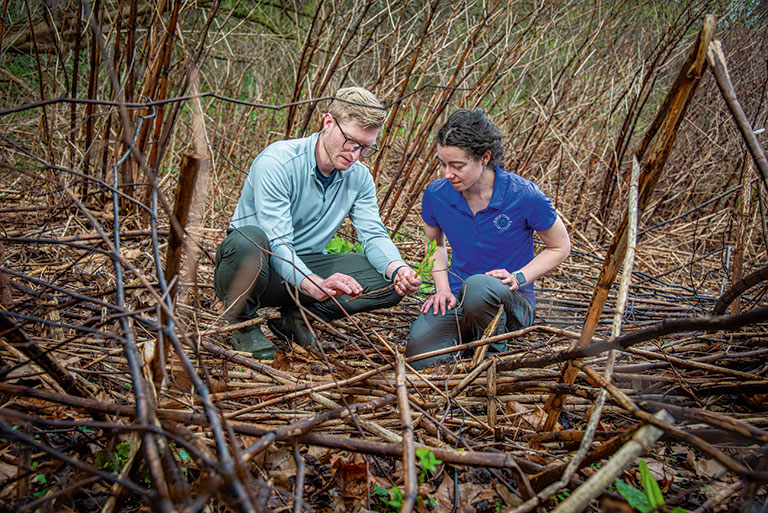 Photo: John Schisler
Photo: John Schisler“This is actually a really good example of what a lot of my job as curator is,” he explains. “A lot of it is my own research. But it’s also a lot about being an advocate for the collection and helping other people do research.”
On paper, the delineation of Heberling’s job responsibilities seems clear: 20 percent collections-related tasks, 20 percent working on exhibits and programs, 10 percent on service. This is according to the museum’s written evaluation criteria for the job. But the bulk of his responsibilities—the other 50 percent—is supposed to be producing research. And Heberling is a very productive researcher.
“This is actually a really good example of what a lot of my job as curator is. A lot of it is my own research. But it’s also a lot about being an advocate for the collection and helping other people do research.”
–Mason Heberling, associate curator of botany, Carnegie Museum of Natural History
Holding a doctorate degree in biology from Syracuse University, Heberling has co-authored five papers this year alone, with another two accepted for publication and an eighth going through review. In 2020, he and one of his co-authors received the prestigious George Mercer Award that recognizes excellence in ecological research by scientists under the age of 40.
Heberling’s research has led him to consider the impacts of climate change on poison ivy and wildflowers sprouting from the forest floor, and the impacts of invasive species on local ecosystems. He’s currently working with postdoctoral fellow Rachel Reeb on how to most effectively communicate with the public about invasive species, while also developing a related exhibition for the museum.
When he’s not in the lab, herbarium, or out in the field, Heberling can be found meeting with undergraduate students at the University of Pittsburgh, where he is also an adjunct associate professor.
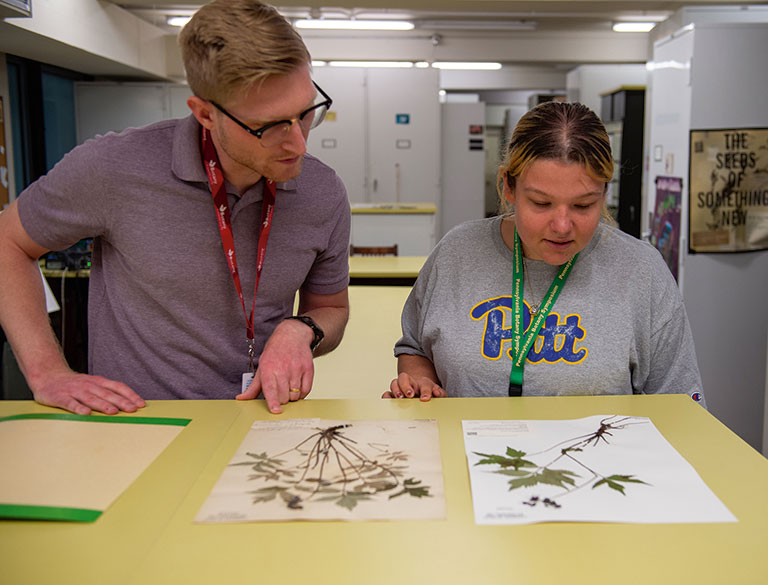 Photo: Matt Unger
Photo: Matt UngerWhile curators have long had academic relationships and published papers, there seems to be a greater emphasis on research now, he says. At least in his position.
“The curator role today is more similar to a professor role,” he says. “I think back in the old days, as they were building the museum, curators were much more involved with the permanent exhibitions, the dioramas and all of these things. Now we have a full-time exhibition staff, so we serve more as experts.”
Communication
The delineation of responsibilities for curators is increasingly blurry as museums respond to societal and scientific shifts. As the only curator of Anthropocene studies in the world, Nicole Heller has freedom to explore what it means to be a museum curator in the 21st century.
A trained conservation ecologist with a doctorate degree in biological sciences from Stanford University, Heller has focused most of her research on understanding biological diversity in the face of the Anthropocene—a new idea that refers to the era in our geological history, beginning in the mid-20th century, when human activities began making a profound impact on Earth’s geology and ecosystems.
As such, she is a one-of-one, curating with no model to follow.
“I have thought about curation as curating a conversation,” Heller says. “It’s curating a set of relationships between the museum and community, curating experiences that can help people to grapple with these issues that are so big, so complex, and so overwhelming.”
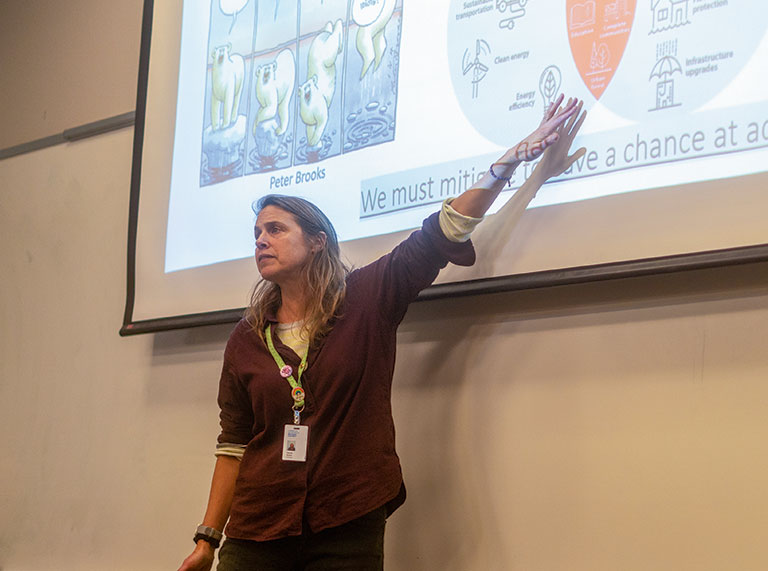 Photo: Matt Unger
Photo: Matt Unger“I have thought about curation as curating a conversation. It’s curating a set of relationships between the museum and community, curating experiences that can help people to grapple with these issues that are so big, so complex, and so overwhelming.”
–Nicole Heller, associate curator of Anthropocene Studies, Carnegie Museum of Natural History
In fulfilling their social role to a broad public, museums are now having more “two-way conversations with the public rather than a one-way ‘message’ transmitted through an exhibition,” according to The Curator of the Future report.
For Heller, this has meant partnering with community organizations and local artists, as well as talking with residents of both rural and urban areas about climate change. She’s not merely trying to dispense knowledge about the impact humans are having on Earth, though. She listens to what people tell her, the questions they ask, the experiences they relate, and how they understand climate change, then incorporates this data into her work. These guided discussions are part of her research, which she has published in academic and museum journals to help other experts hone their communication practices.
Heller has helped lead the museum’s Climate and Rural Systems Partnership, a multi-institute collaboration focused on climate learning in rural communities. The inspiration behind the project: While museums have the scientific resources to understand climate change, they aren’t connecting enough with certain audiences for whom the topic can be socially complex.
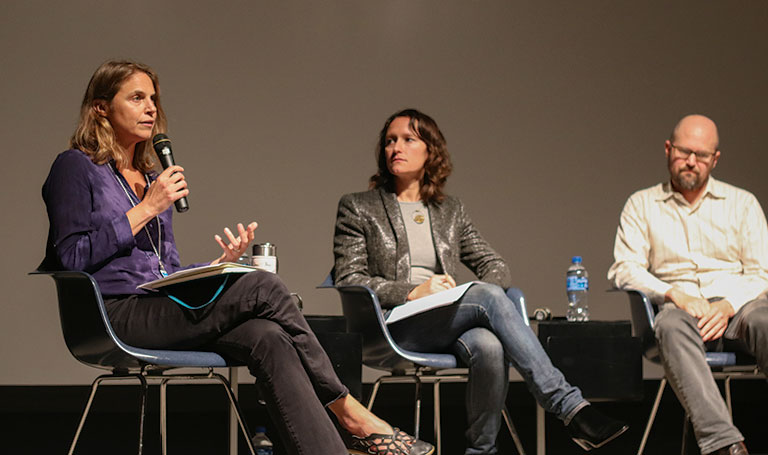
Some of this work has been featured in the museum’s exhibitions. We Are Nature, an ongoing series of exhibits highlighting the connections between humans and the rest of nature, has featured the stories of community partners and even invites contributions from museum visitors.
The latest installment on the museum’s third floor overlook asks visitors to write their hopes and fears for the future on note cards and place them on a nearby wall with one of three future dates—2027, 2035, and 2095—each of which represents a potentially critical moment in the evolving climate crisis. Many of the note cards are being placed into time capsules, which will be opened in the corresponding years.
This is what Heller means by “curating a conversation.” The issue of humans’ modern impact on the planet is so large and overwhelming that it requires a conversation in order to make the scientific content impactful and relevant.
Heller calls it “co-production research with the community,” in which these conversations help her develop better strategies for communicating science. The end goal, she notes: “You really roll up your sleeves and work with practitioners and public audiences to help them understand these problems scientifically, and to work together to adapt practices and communication to be resilient to change.”
Collaboration and Community
An exhibition that Alyssa Velazquez curated for Carnegie Museum of Art not only began with conversations with the public, it also was created in partnership with them.
That exhibition, Pittsburgh Satellite Reef, is an assemblage of crocheted “corals” created out of yarn by 281 makers, mostly from western Pennsylvania. It’s part of the Crochet Coral Reef Project by Christine and Margaret Wertheim and the Institute for Figuring, a worldwide initiative to raise awareness about the ongoing destruction of coral reefs from climate change.
 Photo: Joshua Franzos
Photo: Joshua FranzosCurating this project involved organizing workshops at the museum and in other locations around Pittsburgh, partnering with western Pennsylvania-based Kid Ewe Knot—which is dedicated to “spreading the love of fiber, craft, and crochet”—and the environmental advocacy organization UpstreamPgh, among others.
Rather than focus on a specific project outcome or impose design constraints on participants, Velazquez gave herself over to the process of a communal craft.
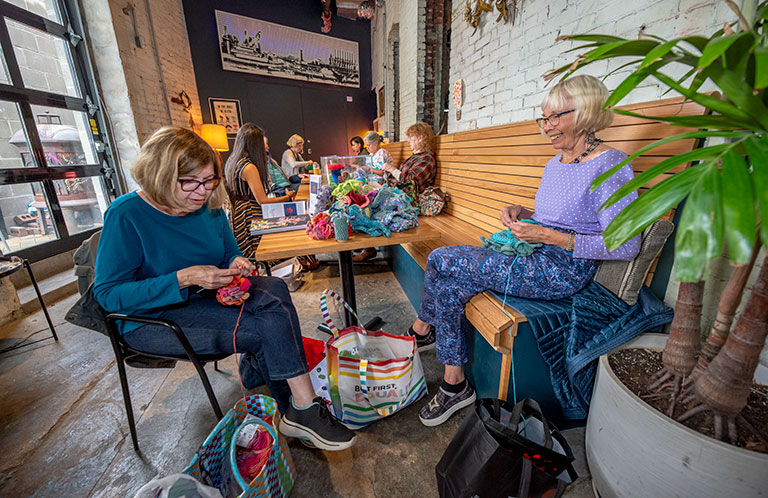 Photo: John Schisler
Photo: John Schisler“We weren’t negotiating the exact look. We were kind of just letting it happen organically, like a reef would build up on itself,” she says, sitting by the finished installation in the “cove” of the museum’s Charity Randall Gallery.
That final creation includes lattices and spiraling structures in wool, twine, ribbon, and lace, whose dyes span the color spectrum. Some are even made from white, brown, or ivory yarn to evoke the bleaching—or die-off—of corals besieged by warming oceans and pollution.
Velazquez’s original vision was to have a large bleached portion of the installation. But there weren’t enough of those from participants. Instead, there was an overwhelming amount of black and yellow specimens, which Velazquez says felt more Pittsburgh-appropriate. So, they made a design shift to a yellow reef, which Velazquez says she now prefers.
“I didn’t get nearly enough of the white hyperbolic crocheted forms I wanted, but I don’t think it suffers for it,” she says. “I think it’s representative of collaborative work and collective agency culminating in a fantastic artistic achievement.”
“I think traditionally this field was very siloed, and that’s why I prioritize collaboration. I’m working with community partners based here in Pittsburgh.”
–Alyssa Velazquez, Assistant Curator, Carnegie Museum of Art
Velazquez also invites collaboration into her own curatorial practice. In addition to holding a master’s degree from the Bard Graduate Center, Velazquez has a background in theater—a necessarily collaborative art form. So she embraces opportunities to work with people outside her field in exhibitions and public programming.
“I think traditionally this field was very siloed, and that’s why I prioritize collaboration,” she says. “I’m working with community partners based here in Pittsburgh.”
Adapting Narratives
Not every curator can engage with living artists; instead, they focus on what objects from our past can tell us. When recontextualized, objects from any period can comment on the present.
“Any really good artwork has more than one interpretation possible,” says Marie-Stéphanie Delamaire, curator of European and American art at Carnegie Museum of Art. “Why do we relate to something that Rembrandt created in the 1600s? It’s because there’s something in that work that can talk to us through generations, through different places and societies.”
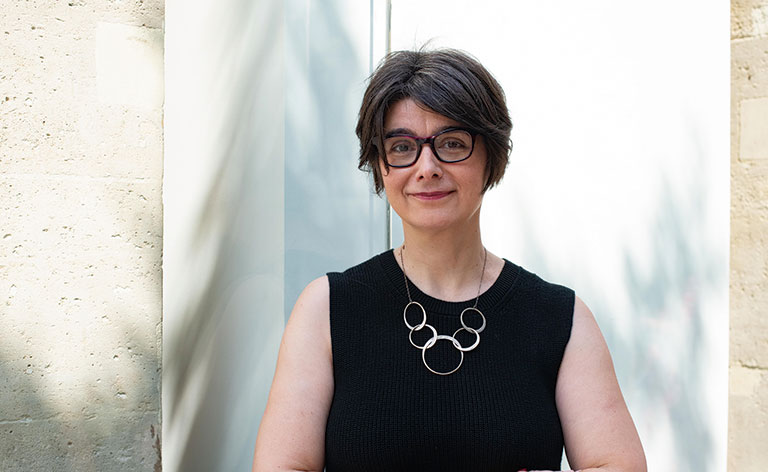
Delamaire keeps this in mind as she works on the reinstallation of the Scaife Galleries.
While visiting the galleries one morning in September, Delamaire points to the 18th-century Swiss painter Angelica Kauffmann’s Virgil Writing his Epitaph at Brundisi, which hangs just inside the galleries’ main doors adjacent to The Encyclopaedia of Invisibility, a 2,400-page tome of overlooked histories that was created in 2018 by the conceptual artist Tavares Strachan.
Their pairing was no accident, Delamaire says. Although Kauffmann was a founding member of the Royal Academy in London, she is not as well known as her male contemporaries and has in some ways been “relegated to the margins of art history.”
“Bringing these two works together creates a conversation,” Delamaire says. “It raises questions about what we think we know.”
Delamaire is not only interested in provoking conversations for museum guests, but also in developing a curatorial practice that builds relations between then and now, between art and people without flattening differences. “The community that we serve today in the museum is always at the forefront of my work.” Her own interpretations change as she reexamines works and discusses them with others.
Frederic Edwin Church’s 1891 painting The Iceberg, for example, portrays a spectacular scene of an iceberg based on sketches the artist made off the coast of Newfoundland and Labrador in the summer of 1859. When Church painted this work more than 30 years after his trip, he positioned the iceberg near a diminutive sailing vessel that was part of a scientific expedition, evoking a sense of nature’s permanence and divine creative power in the face of human fragility.
Centuries later, icebergs now convey something different—a sense of nature’s vulnerability, a place being threatened because of human actions on Earth’s climate.
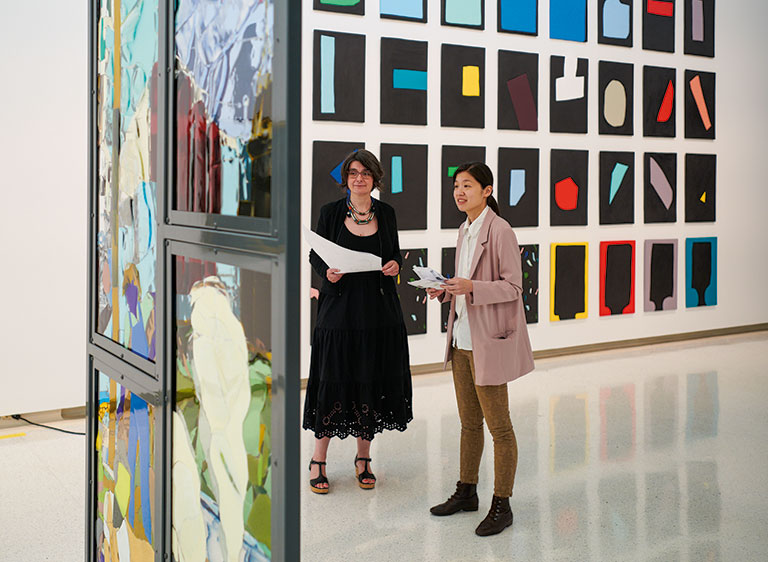
Delamaire finds these conversations between cultures, both past and present, exciting.
“I’ve always been fascinated by intercultural relationships and how someone else might interpret something differently,” she says. “If I disagree, I have to ask myself why. And I’m hoping that I and the other person grow in the process.”
Considerations of social and political contexts, of identity and the narratives that have been prioritized and excluded from collections, has led curators to rethink how they build collections.
“I’ve always been fascinated by intercultural relationships and how someone else might interpret something differently. If I disagree, I have to ask myself why. And I’m hoping that I and the other person grow in the process.”
–Marie-Stéphanie Delamaire, curator of European and American art, Carnegie Museum of Art
In this way, Delamaire says, curators are not simply experts at choosing which works best represent the great masters; they are also advocates for voices who have been overlooked, changing how we remember the past and envision the future.
“In the choices I make while building the collection,” she says, “I’m always considering who it is that we serve, and the museum’s role in the community and beyond.”
Advocates
Curators are not only advocates for overlooked cultures and people, they are also advocates for the natural world.
“Part of our job is to be an advocate for the research and an advocate for the specimens,” says Ainsley Seago, associate curator of invertebrate zoology at the Museum of Natural History.
Holding a doctorate in entomology from UC Berkley, Seago’s specialty is beetles, but she’s responsible for the museum’s entire collection of 16 million pinned insects, which are stored in large drawers—some the glass-top type used by jewelers, and not all of them organized to her liking. She could spend the rest of her career working with collection managers on identifying and sorting them according to their taxonomic classification. But a fundamental part of her job is to defend their existence in the museum.
“This is a giant room full of dead bugs. I have to be able to argue to anyone why my massive pile of dead bugs is worth anything.”
–Ainsley Seago, associate curator of invertebrate zoology, Carnegie Museum of Natural History
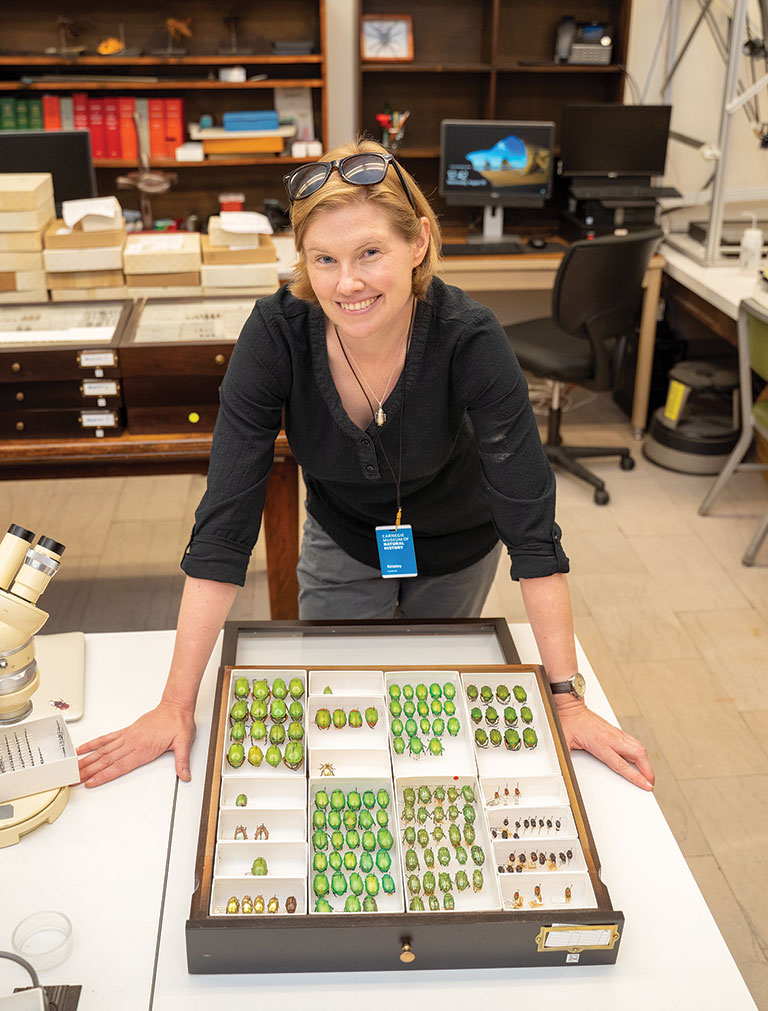 Photo: Tim Evans
Photo: Tim Evans“This is a giant room full of dead bugs,” Seago says, her arms spread wide and sweeping across a library of research books and drawers of pinned insects. “I have to be able to argue to anyone why my massive pile of dead bugs is worth anything.”
Seago is, perhaps, the world’s most enthusiastic advocate for dead bugs. This comes through in museum lectures, teaching college classes, in leadership roles at the Entomological Collections Network, and in her sideline gig illustrating insects for everything from research publications to T-shirts.
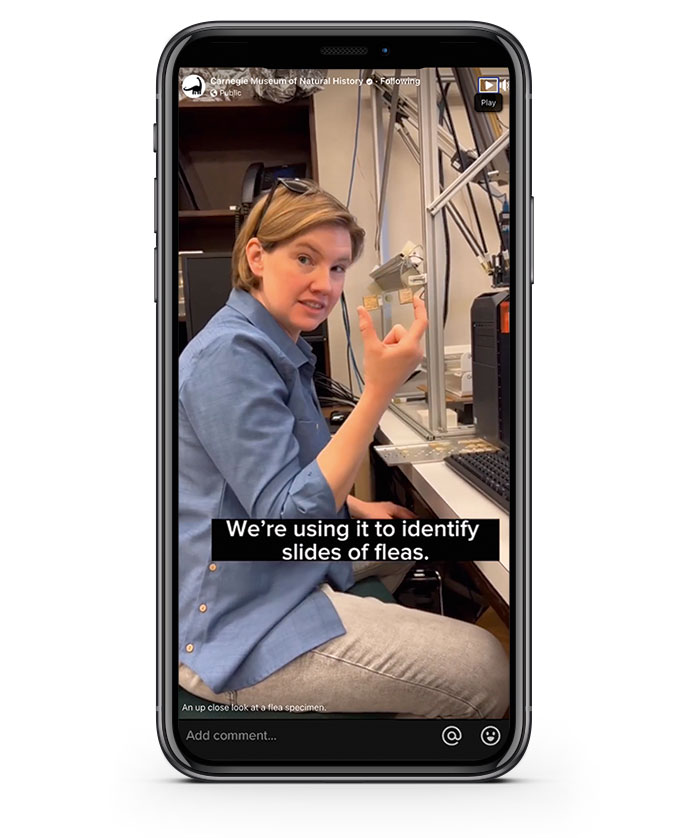
There is an immense number of research questions that this room full of insect specimens can help answer, with implications for geological prospecting, climate change, ecology, crop protection, taxonomy, and evolution itself, Seago explains. “All of these different fields have research questions that can be supported only by a large and well-managed natural history collection.”
To Seago, being an advocate for museum collections is not a choice that curators get to make but perhaps the most important part of the job. In some ways, it reflects the evolution of museums themselves.
Curators, like the museums that employ them, must engage with a curious and skeptical public that is increasingly willing to challenge their authority. In a world of intense competition for resources, and for people’s time and attention, they must answer fundamental questions of why the sciences and humanities matter.
“That’s basically having to justify yourself,” Seago says. “That’s the constant job—inviting people to become interested.”
Receive more stories in your email
Sign upTags:
Science & Nature
